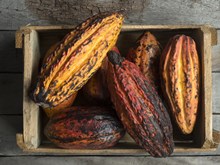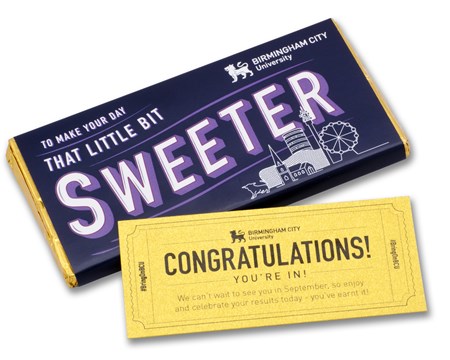How to taste chocolate?
If you want to explore the individual characteristics of the various cocoa beans used and their origins, perhaps find your ideal, then the best way to taste chocolate is to use other comparisons to help you differentiate between the various smells, flavours and textures. Chocolate tasting therefore is best performed comparatively with similar cocoa contents of unflavoured dark or milk chocolate bars from several manufacturers. This way you will not be distracted by the varying levels of sugar and milk content and your senses will be more focused.
Sight
Before you begin your chocolate tasting you will first discover the differences in colour as different beans produce finished chocolate with varying colours from rich reds and coppers to dark browns. This is not a sign of quality and a common myth that the darker chocolate is somehow a better chocolate is certainly not the case.
Smell
Break a piece of chocolate and smell it. You need to understand what you are sensing, is it floral, fruity, earthy? Like wine tasting there are many associated smells and it is by recognising them that helps you decide whether it is to your liking, or not. Is the chocolate producing an intense aroma or is it subtle? Smells associated to a poor quality chocolate may be plastic or rubber, this can be due to poor fermentation or artificial drying of the cocoa beans. Another unfavourable sign is a heavy smokiness caused by drying the beans over wood fires (The ideal way to dry cocoa beans is simply under the sun, this is time consuming and therefore more expensive).
Taste
With a clean palette put a small amount of chocolate in your mouth and let it linger on your tongue for a short while and slowly move it around, extracting all the flavours. The main points to look out for in chocolate are firstly the hit of flavours and how long these last; ideally the flavours should steadily rise and linger rather than a "hit and run" effect. Also, the finest chocolate will produce a serious of flavours so creating a full and varied flavour profile from the first taste to the finish, rather than one level of flavour and that's it. Next are the basic flavours of acidity, bitterness, sweetness and astringency. Is the chocolate too sour or sweet, is the acidity just enough to assist any fruitiness or is it too overpowering. A well balanced sensation of flavours depicts a good chocolate, a monotonous and uninteresting taste and also an overpowering note depicts a poor chocolate.
Texture
Generally speaking, and there are certainly exceptions to this rule, a silky smooth texture with an absence of any grittiness is the mark of a good chocolate. A gritty texture is due to poor conching of the chocolate (this is a process where the particles are repeatedly broken down). As this has nothing to do with the quality of the bean but the process itself it is placed as the final test of a good chocolate.
Choosing your Chocolate
Our advice to anyone wishing to buy chocolate for a chocolate tasting would be to choose an assortment of single origin chocolate bars, or a chocolate tasting box, such as the Premier Cru or 1 Cru boxes designed specifically for this purpose by either Michel Cluizel or Amedei
We recommend choosing chocolate bars with different origins and even the cocoa varieties used so you can fully experience the diversity of characters and flavours available within each chocolate. Chocolate tasting notes can also be printed off from our website for a guide. For a chocolate tasting gift why not choose our milk or dark chocolate tasting hampers with both chocolate bars and filled chocolates, complete with tasting notes.









